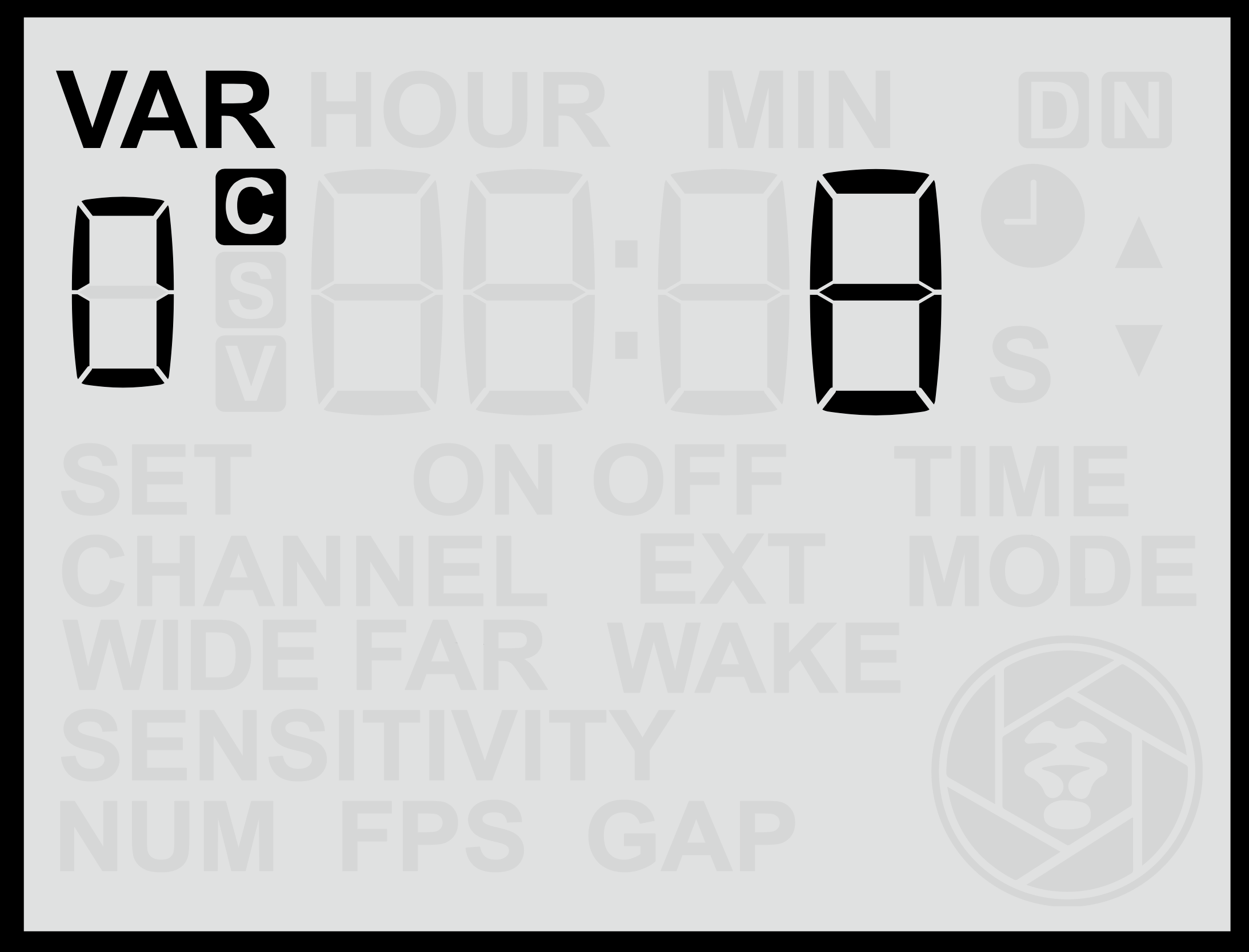Custom Variable 0
This is different to the main far & wide sensitivity setting which relate to the amplitude of the infrared signal required to trigger the sensor, i.e. how warm, large or close the subject must be.

Adjusting Sampling Frequency
- From the C Var 0 screen, use the Up or Down buttons to change the value.
-
Press the Set button to save your selection.
Sampling Frequency can be set between 1 and 16 (the default is 8), where:
-
16 = Maximum sampling frequency (the sensor will detect faster, smaller and more momentary movements).
-
1 = Minimum sampling frequency (requires slower, larger and more pronounced movement to trigger).
At higher sampling frequencies, the sensor will consume slightly more power and may be more susceptible to false triggering from wind, vegetation or dappled light, but it will be more effective at detecting small, rapidly moving subjects. Therefore, you should look to optimise the sampling frequency based on the intended subject, the environmental conditions and your battery life requirements.
Adaptive Sensitivity Mode
The sensor also features an Adaptive Sensitivity algorithm designed to help reduce false triggers in challenging environments.
To enable or disable Adaptive Sensitivity:
-
Hold either the Up or Down button for more than 2 seconds while on the C Var 0 screen.
-
When active, the display will show the “ON” indicator for Adaptive Sensitivity.

In this mode, the sensor dynamically adjusts its primary sensitivity thresholds, i.e. the thresholds that relate to the main far & wide sensitivity settings (not the sampling frequency) in response to background activity levels:
-
If there is persistent low-level motion or heat variation (for example, caused by wind-blown vegetation or rising warm air during the middle of the day), the trigger threshold is automatically increased.
-
When background movement decreases, the sensor gradually lowers the threshold again.
This adaptive behaviour helps the sensor remain effective while reducing false detections under fluctuating environmental conditions.
In most circumstances, Normal Sensitivity Mode provides sufficient control. However, if false triggers occur intermittently — such as at certain times of day or under windy or hot conditions — Adaptive Sensitivity Mode could improve reliability.
